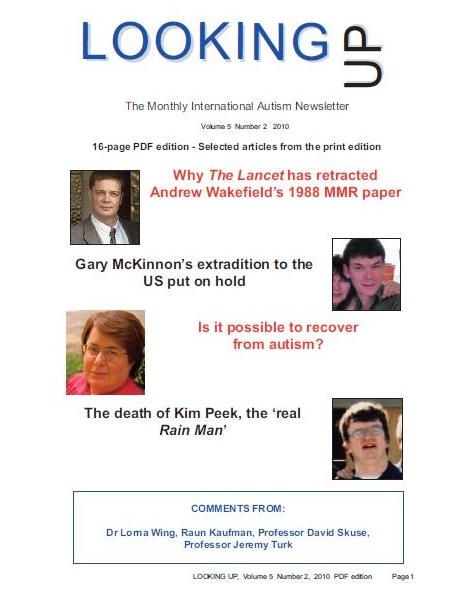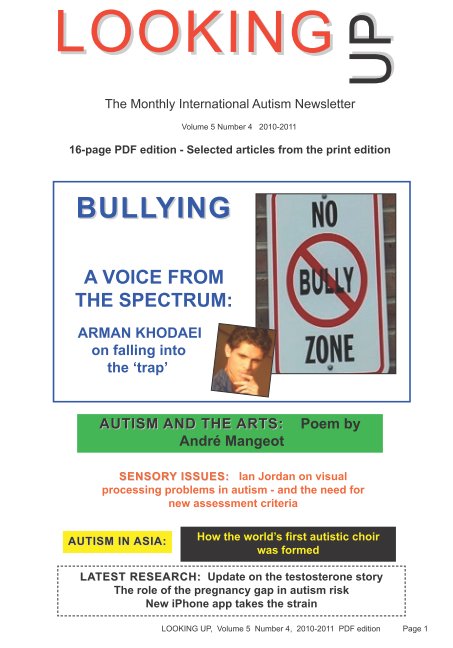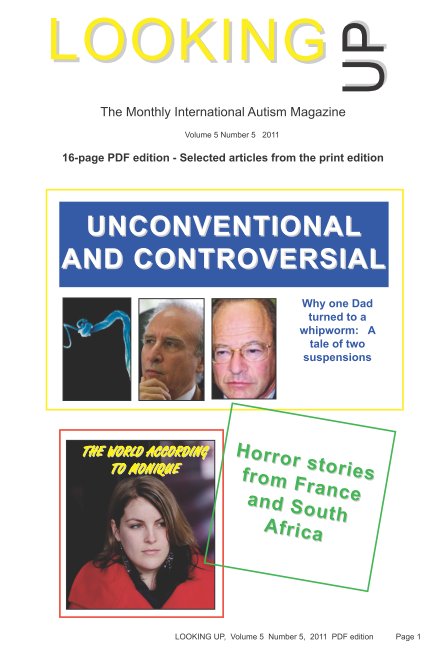


| Home page | Subscribe (print edition) | Selected articles | Our publications | Our mailing lists |
| PDF edition | Subscribe (PDF edition) | Back issue contents | Autism books | Contact us |
From Volume
5 Number 3 (print
and PDF editions)
LOS Angeles, USA: HBO’s critically acclaimed biopic, Temple Grandin, won five Emmys at a remarkable 62nd ceremony in Los Angeles on August 27, 2010.
The film tells the extraordinary real-life story of the bestselling author and groundbreaking agricultural scientist who struggled early in life to learn to cope with autism before the disorder was widely known.
The biopic, which had to overcome what was widely perceived in the industry as challenging subject matter to make its way to the screen, claimed five Emmy prizes, including outstanding made-for-TV movie.
Attired in red and black rodeo gear, Grandin herself became a palpable presence at the ceremony, at one point, rising and excitedly swinging her hand lasso style from the audience. And while standing on stage after the movie had won its top award, she warmly embraced a sobbing executive producer, Emily Gerson Saines, who said she found inspiration in Grandin’s life story as her own child had been diagnosed with autism.
“I hope this movie is going to educate a lot of people about autism because there are lots of people who don’t understand it," Grandin said backstage. “Somebody [with autism] might be a Silicon Valley genius, and somebody might be handicapped and non-verbal.”
The biopic turned out to be one of the biggest winners at this year’s Emmys, taking home prizes as well for actress Claire Danes, who portrayed Grandin; supporting actress (Julia Ormond); supporting actor (David Strathairn); and director (Mick Jackson).
During their acceptance speeches, all of the winners paid tribute to Grandin. Danes described her as “the bravest woman I’ve known.” Jackson called her “spunky, smart and vivid,” saying he wanted to make a movie that was “never sentimental.”
The movie spotlights Grandin’s school years, focusing on her relationship with one special science teacher, played by Strathairn, and how she went on to shake up the male-dominated livestock industry by developing a more humane system to slaughter cattle.
In an interview on the red carpet, Grandin praised Danes’ performance, saying: “She became me. It took a lot of practice.”
Asked whether Grandin had overcome her fear of human touching and contact, Danes said backstage: “Yes, she’s overcome a lot of fears. And she’s quite polished now in relating to people in a more normal and socially acceptable way. She’s very different from who she was as a teenager.”
Grandin herself appeared to be awed by the red carpet and spectacle of the ceremony. “I feel like a kid in Disneyland,” she said.
Born in 1947, Grandin was diagnosed as autistic at a young age due to her inability to speak or function socially like other children. As an adult, Grandin became a renowned public advocate for those born on the autistic spectrum. Her high-functioning autism ultimately allowed her to earn a doctorate in animal science, become a university professor, and pen an autobiography about her experiences. She has also made notable contributions to the ethical treatment of livestock. Grandin, who believes that her autism helps gives her insight into the feelings of farm creatures, famously designed more humane corrals for cows headed for slaughter.
Grandin has been the subject of several film treatments before HBO’s award-winning movie, including a BBC documentary (The Woman Who Thinks Like A Cow) and an episode of director Errol Morris’ First Person.
Search for books by Temple Grandin

|

|

|

|

|

|

|

|
| Current 40-page print edition issue | |||||||||||||||
|---|---|---|---|---|---|---|---|---|---|---|---|---|---|---|---|

|
| ||||||||||||||
| PRINT EDITION BACK ISSUE CONTENTS AND FRONT COVERS | ||||||||||||||||||||||||||
|---|---|---|---|---|---|---|---|---|---|---|---|---|---|---|---|---|---|---|---|---|---|---|---|---|---|---|
| VOLUME 1, Number: | 1 | 2 | 3 | 4 | 5 | 6 | 7 | 8 | 9 | 10 | 11 | 12 | VOLUME 2, Number: | 1 | 2 | 3 | 4 | 5 | 6 | 7 | 8 | 9 | 10 | 11 | 12 | |
| VOLUME 3, Number: | 1 | 2 | 3 | 4 | 5 | 6 | 7 | 8 | 9 | 10 | 11 | 12 | VOLUME 4, Number: | 1 | 2 | 3 | 4 | 5 | 6 | 7 | 8 | 9 | 10 | 11 | 12 | |
| VOLUME 5, Number: | 1 | 2 | 3 | 4 | 5 | 6 | 7 | 8 | ||||||||||||||||||
| You can find our PDF EDITION CONTENTS AND COVERS on our PDF EDITION BACK ISSUES PAGE | ||||||||||||||||||||||||||
| Home page | Subscribe (print edition) | Selected articles | Our publications | Our mailing lists |
| PDF edition | Subscribe (PDF edition) | Back issue contents | Autism books | Contact us |